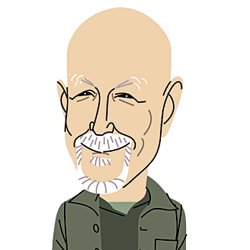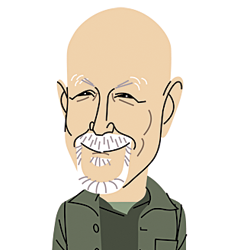 spend a lot of time thinking about trade show attendees, and why they really go to all the trouble to physically attend a trade show in person.
spend a lot of time thinking about trade show attendees, and why they really go to all the trouble to physically attend a trade show in person.
If you think about it, it's a daunting task for attendees and serious buyers just to attend. They must select and register for the show, not really knowing if their time spent will prove to be productive. They endure the "joys" of business travel, only to descend on a city where the supply of airline inbound seats are tight, hotel rooms are overpriced, restaurants are crowded, and local transportation capacity is stretched to the limit. Yet, they come anyway – full of hope.
What could possibly drive these attendees to go through all the hassle, time, and expense? And, more importantly, how can exhibitors tap into these powerful motivations?
In a number of studies done over the past few years (this particular one from Tradeshow Week magazine), the top reasons why people attend trade show were examined. Among the findings were these three key drivers.
- The ability to keep up-to-date with changing industry trends
- The ability to see, touch, and demo new products, equipment, technology and services
- The ability to network with the goal of developing and maintaining industry relationships
I don't know whether these three are the three most important reasons, but they're definitely right up there near the top. Networking is, of course, the face-to-face element which trade shows provide in such abundance, fulfilling our biological cravings for social contact beyond a text message, voice mail, or computer screen.
The other elements have something very obvious in common – they're all about "seeing what's new." Indeed, if I had to generalize and summarize why most people go to trade shows, I'd say it's to see what's new. Simple as that.
It's true that most serious buyers will pre-plan their visits and agendas, even going so far as to pre-schedule appointments with key exhibitors (which is why you should always have a strong pre-show marketing campaign, by the way). That being said, I'd bet that every one of those attendees carries with them a glimmer of hope that they'll find something new to see, something interesting to explore, something unexpected to find.
So how can exhibitors leverage these motivations? The best advice I have was given to me by my former boss, Jim Andrews of Tango LLC, a boutique branding and advertising agency located near Chicago. In developing curriculum for an EXHIBITOR Show class called "Exhibit Copywriting 101," Jim told me, "never sacrifice clarity for cleverness." In other words, if you have an important message, then hit the attendees over the head with it. Don't make them work. Be obvious.
If you've got something new, then use those three letters – NEW – and be obvious about it. Appeal to this strong attendee driver to see all the "new" stuff. And do it in an obvious way. Don't hide it among the fine print. Call it out front and center.
NOTE: Of course, as with any advice, make sure this is appropriate to your company, industry, and situation. You may be better off hiding your "new" message until certain criteria are met, but once those criteria are met, go for it.
There are many advantages to declaring your new news. Here are a few of them:
- Important buyers cannot afford to come home from a show having missed out on something new. They'd have to answer too many questions down the road about why they missed it and their competitor didn't.
- You'll appeal to your existing customers as well as prospects. Your own customers may in fact be the best audience for your new news, since they already like you.
- "New" can cover lots of stuff beyond products. New processes. New owners. New direction. New financing. New guarantee. New manufacturing plants. New services. New locations. So even if you don't have a new product to launch at a show, you might still be able to capitalize on the power of newness.
- It's extremely cost effective to promote something as being new. Make a simple starburst sign with the word "NEW" on it, and affix it anywhere on an exhibit. Then, later, you can change it to promote new news in the future.
- Having something new invites conversation. Attendees will want to information about your new offering or proof to back up your your "new" claim. A conversation is started, and you can take it from there. It's also far more powerful to ask passersby "Do you want to see our new XYZ?" than to simply invite them in to see a product that has been on the market for years.
- Very few other exhibitors go out of their way to promote what's new. For some reason, most companies are reluctant to claim or highlight any new offerings. If you do it overtly, and with clarity, you'll stand out from your fellow exhibitors (especially those who don't read this column).
New is news. It always has been. Yet it is often overlooked by even experienced exhibitors. If you want your messages to come across even stronger, then hit one of your attendees strongest motivations. Be clear, be obvious, be big, and promote the newness of your news.




 spend a lot of time thinking about trade show attendees, and why they really go to all the trouble to physically attend a trade show in person.
spend a lot of time thinking about trade show attendees, and why they really go to all the trouble to physically attend a trade show in person.


